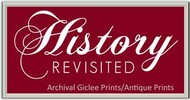 Loading... Please wait...
Loading... Please wait...All prices are in All prices are in GBP
Categories
- Home
- Antique Prints
- Children Illustrator Hugh Thomson Two Jolly Postboys Antique Prints
- Home
- Antique Prints
- Illustrators
- Children Illustrator Hugh Thomson Two Jolly Postboys Antique Prints
- Home
- Antique Prints
- Children Topic
- Illustrators- International
- Children Illustrator Hugh Thomson Two Jolly Postboys Antique Prints
- Home
- Antique Prints
- Christmas Celebration
- Children Illustrator Hugh Thomson Two Jolly Postboys Antique Prints
- Home
- Antique Prints
- Children Topic
- Children Illustrator Hugh Thomson Two Jolly Postboys Antique Prints
Product Description
Children Illustrator Hugh Thomson Jolly Postboys Christmas 1889 Regency Jane Austen Advertising
“The Loves and Jealousies of Two Jolly Postboys” set of four sheets.
Antique Colour Printed Wood engravings (chromoxylographs) after illustrations by Hugh Thomson (1860-1920)
Published by The Graphic (Newspaper), Christmas Number, 1889
Size of each page = 41 x 31cm (16 1/3 x 12 1/3 inch) each / Image size 37 x 25cm ( 14 2/3 x 10 inch)
Condition = Fair. Printed in The Graphic, in the year that it became The Daily Graphic, the illustrations have contemporary advertisements on the rear of each. The paper on two the paper has been affected by water on the top edge that is easily covered by matboard when presented for framing.
"Tom and Jerry were two jolly postboys who live in great friendship from boyhood. Their fathers had been postboys before them, until, getting too stout for the profession, they handed their their traditions on to our heroes, giving each much good advice and a pair of boots.in the village where they were born and brought up lived pretty Polly Flinders, and Tom and Jerry when at school had cast looks of favour upon her...their youthful friendship sustained a severe shock..."
Post Boys is a term belonging to the public postal service that was introduced in 1635. Riders on horseback carried the mail, but due to the poor condition of the roads the Royal Mail system was slow and hard on the men and the horses they rode. The riders, or post-boys, wore scarlet livery. Dirt roads were in notoriously poor condition and the journey was challenging for even fresh horses. Letters were carried from post to post by post-boys and delivered to the local postmaster (or postmistress), who removed the letters for the area and had them picked up or delivered. In the 1800's saw a loss of their profits to highway robbers. then therer was the post-boys' poor reputation, much of it deserved. Although postage could be prepaid, a major reason that the recipient paid for the delivery of a letter was to ensure that it would be delivered in the first place. This is a feature in Jane Austen's Regency era novels.
Hugh Thomson (1860-1920) - Hugh Thomson was born in County Londonderry and was an instinctive artist with little formal training. He stared work at in a Christmas card color printing company. Influenced by Randolph Caldecott, he created an idyllic world of stage coaches, sedan chairs, feasts and port wine.from the late 1880s he was in demand to illustrate novels for Jane Austen, Charles Read an, later, J.M. Barrie.

















